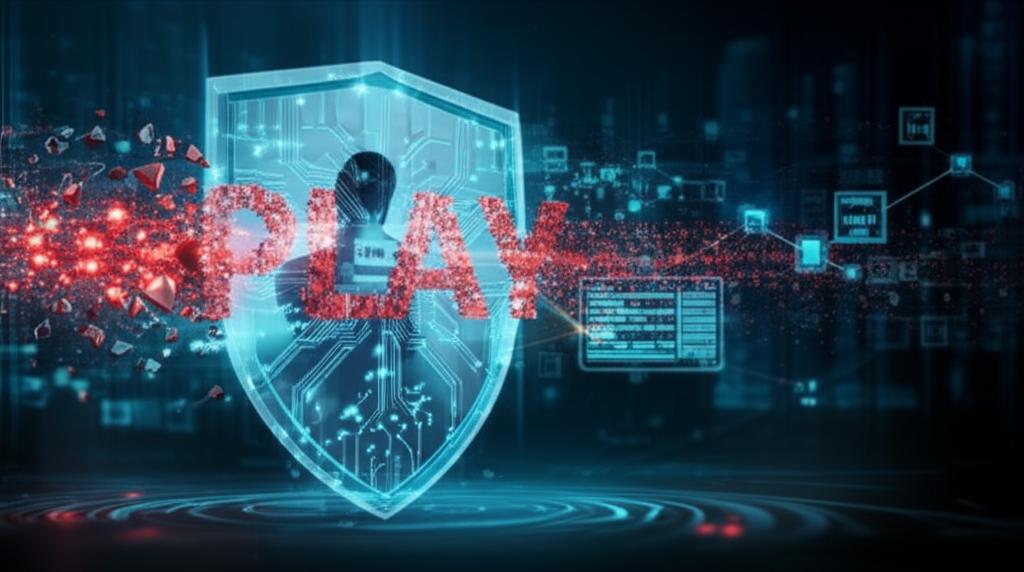Battling the Malicious Play Ransomware Group: Essential Detection & Protection Strategies
In the ever-evolving landscape of cyber threats, ransomware continues to be a formidable adversary for organizations worldwide. Among the most notorious players to emerge recently is the Play Ransomware Group, a sophisticated and highly destructive threat actor. Understanding their tactics, techniques, and procedures (TTPs) is paramount for robust cybersecurity. This article delves into the critical aspects of detecting and protecting against the devastating impact of the Play Ransomware Group.
Who is the Play Ransomware Group?
The Play Ransomware Group, also known by some security researchers as “Balloonfish” or “NoName057(16)”, surfaced prominently in 2022. They quickly gained notoriety for their targeted attacks against large enterprises and government entities across various sectors and geographical regions. Unlike some opportunistic ransomware groups, the Play Ransomware Group employs a “big game hunting” approach, focusing on high-value targets to maximize their extortion potential.
Their operations are characterized by a meticulous reconnaissance phase, prolonged dwell times within compromised networks, and the strategic deployment of their custom-developed ransomware payload. The group is particularly adept at exploiting known vulnerabilities in public-facing applications and services, as well as leveraging social engineering tactics.
How the Play Ransomware Group Operates: Attack Vectors and TTPs
The operational methodology of the Play Ransomware Group is consistent with many advanced persistent threat (APT) groups, involving multiple stages:
- Initial Access: They often gain initial access through:
- Exploitation of public-facing vulnerabilities (e.g., FortiManager, Microsoft Exchange, Zoho ManageEngine).
- Brute-forcing or exploiting insecure Remote Desktop Protocol (RDP) connections.
- Phishing campaigns targeting employees with elevated privileges.
- Reconnaissance and Lateral Movement: Once inside, the group conducts extensive internal reconnaissance to map the network, identify critical assets, and locate backups. They use legitimate tools and living-off-the-land binaries (LotL) to move laterally undetected.
- Privilege Escalation: They employ various techniques to escalate privileges, often targeting Active Directory configurations or exploiting misconfigurations to gain administrative control.
- Data Exfiltration: A hallmark of the Play Ransomware Group is their double extortion strategy. Before encryption, they exfiltrate sensitive data to their command-and-control servers, threatening to publish it if the ransom is not paid.
- Ransomware Deployment: Finally, they deploy their bespoke ransomware payload, which typically appends a
.PLAYextension to encrypted files, rendering them inaccessible. They often leave a ransom note with instructions for payment and contact.
Crucial Detection Strategies Against Play Ransomware Group
Effective detection is the first line of defense. Organizations must implement a multi-layered approach to identify the presence and activities of the Play Ransomware Group:
- Network Monitoring: Look for unusual outbound connections, especially to uncommon or suspicious IP addresses and domains. Monitor for excessive data transfer, which could indicate data exfiltration.
- Endpoint Detection and Response (EDR): EDR solutions are vital for detecting malicious processes, unusual file modifications, and suspicious lateral movement attempts. Pay attention to LotL tool usage that deviates from normal baselines.
- Vulnerability Management: Proactive scanning and patching of known vulnerabilities, particularly those frequently exploited by ransomware groups, can prevent initial access.
- Log Analysis: Regularly review security logs from firewalls, servers, and identity providers for signs of brute-force attempts, unauthorized access, or privilege escalation.
- Threat Intelligence: Stay updated on the TTPs, Indicators of Compromise (IoCs), and targeted vulnerabilities associated with the Play Ransomware Group.
Robust Protection Strategies Against Play Ransomware Group Attacks
Preventing an attack from the Play Ransomware Group requires a comprehensive cybersecurity posture that includes both proactive measures and a solid incident response plan:
Preventative Measures:
- Patch Management: Implement a rigorous patch management program to ensure all operating systems, applications, and network devices are up-to-date, especially for public-facing services.
- Multi-Factor Authentication (MFA): Enforce MFA for all remote access services, administrative accounts, and critical systems to mitigate the impact of compromised credentials.
- Strong Access Controls: Implement the principle of least privilege. Segment networks to limit lateral movement and restrict administrative access.
- Regular Backups: Maintain immutable, offline backups of critical data. Test backup recovery procedures regularly to ensure data can be restored effectively.
- Employee Training: Conduct regular security awareness training to educate employees about phishing, social engineering, and safe internet practices.
- Security Software: Deploy robust antivirus, anti-malware, and next-generation firewall solutions.
- Disable Unnecessary Services: Reduce the attack surface by disabling or uninstalling services and applications that are not essential for business operations.
Incident Response and Recovery:
- Incident Response Plan: Develop and regularly test a detailed incident response plan specifically for ransomware attacks. This plan should outline roles, responsibilities, communication strategies, and technical steps for containment, eradication, and recovery.
- Network Segmentation: In the event of an attack, quickly isolate affected systems and segments to prevent further spread of the Play Ransomware Group’s activities.
- Forensics: Preserve logs and system images for forensic analysis to understand the attack vector and TTPs used by the Play Ransomware Group.
- Communicate: Maintain clear communication with stakeholders, including legal, PR, and law enforcement, if necessary.
The Persistent Threat of the Play Ransomware Group
The Play Ransomware Group continues to evolve its methods, making it a persistent and dangerous threat. Their ability to adapt, target high-value organizations, and employ double extortion tactics underscores the critical need for vigilance and continuous improvement in cybersecurity defenses. Organizations must not only protect against known vulnerabilities but also prepare for unknown threats by building resilience into their IT infrastructure.
Conclusion
Combatting the Play Ransomware Group demands a proactive, multi-faceted approach. By understanding their sophisticated attack methods, implementing robust detection capabilities, and deploying comprehensive protection strategies, organizations can significantly reduce their risk exposure. A strong security posture, coupled with regular testing and employee education, is the most effective defense against the relentless and malicious tactics employed by the Play Ransomware Group and similar cyber adversaries.







